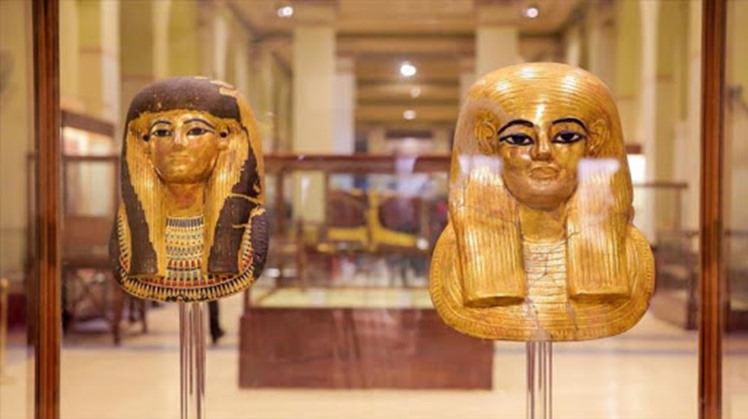In a new step in the Grand Egyptian Museum, which is to start implementing the scenario of the museum display of the golden king Tutankhamun’s holdings inside his hall in the museum, which has an area of 7,000 meters, and with the near transfer of the rest of the king’s possessions from the Egyptian Museum to Tahrir, what will replace his mask, his chaps and the golden accessories of the Pharaoh Little?
The new collection that replaces the possessions of King Tutankhamun is the group "Yuya and Tuya" and "Tanis", as they have many gilded holdings, and it is possible to place the gilded "Tanis" mask in place of the young pharaoh King Tutankhamun.
214 artifacts are the collection of "Toya and Yuya" collectibles, including the mummy of Toya and Yuya and their coffins, and also included the Yuya Papyrus, which includes incantations from the Book of the Dead in the corridor of the cemetery, and is 20 meters long. Liuya's canopy chest, which is decorated with gold embellishment, and Liuya's outer rectangular coffin.
Yuya's origins go back to the city of Akhmim, where he belonged to the nobility and was one of the army men, in addition to his work as a priest of the god "Min", the main deity in Akhmim. Yuya occupied several important positions in the palace, such as the superintendent of horses, as his title may indicate "father The god "referred to the distinguished cycle as the king's father-in-law, and Toya bore many religious titles, as well as the title of" the Queen's mother, the great wife of the king, "a title she cherished so much, and recorded it time and time again on her coffins and collections.
The Grand Egyptian Museum will contain a large number of artifacts exceeding 50 thousand pieces, and includes the collection of the Pharaonic King Tutankhamun’s holdings, to be fully displayed for the first time in history, and the display scenario is implemented at the present time through a weekly list, meaning that there is a specific statement of the number of artifacts. It belongs to the golden king, and it will be placed inside his fattarin every week, through a specialized archaeological committee.
 Mon, Mar. 8, 2021
Mon, Mar. 8, 2021